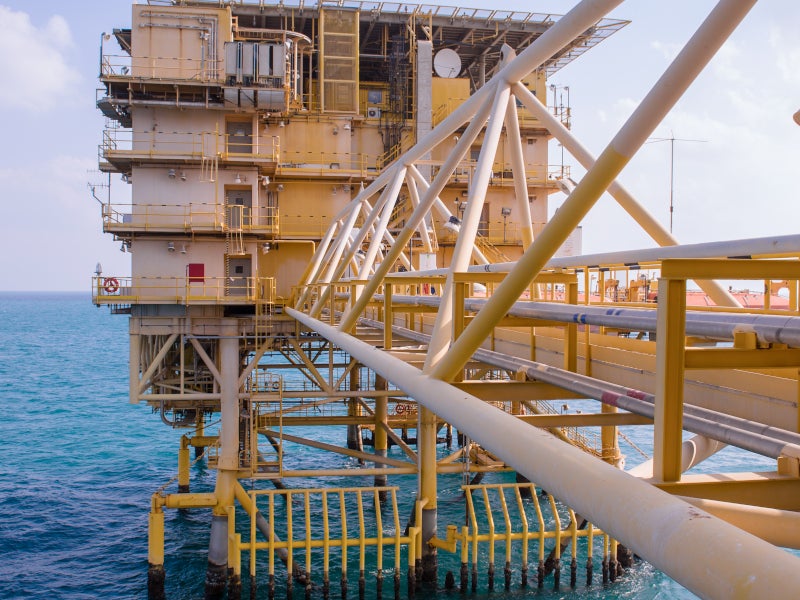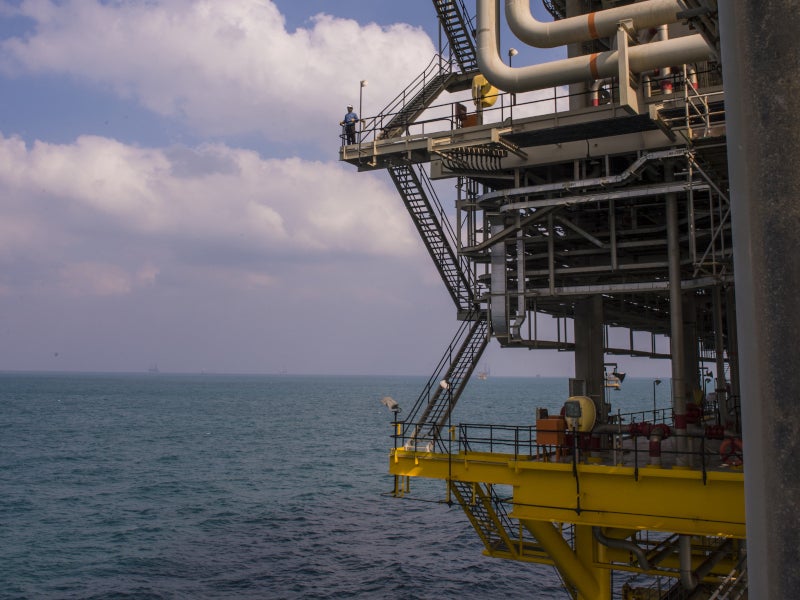The Safaniya oil field located in the Arabian Gulf in Saudi Arabia is the world’s biggest conventional offshore oil field both by recoverable reserves and production capacity.
Owned and operated by state-run oil behemoth Saudi Aramco, the giant offshore field is capable of producing up to 1.3 million barrels of Arabian heavy crude a day.
Discovered in 1951, the Safaniya oil field has been producing since 1957. It was estimated to contain more than 34 billion barrels of recoverable oil equivalent and more than five trillion cubic feet of gas in recoverable reserves as of December 2018.
Saudi Aramco has continued to improve oil gathering facilities and use enhanced oil recovery methods as part of the Safaniya Master Development Plan in order to restore the production capacity of the mature field.
Location and size
The field is located in the north-west corner of the Arabian Gulf, approximately 260km north of Dhahran, in the Eastern Province of Saudi Arabia.
The mammoth oil and gas field measures 50km-long and 15km-wide and is spread over an area of approximately 750km2.
According to Aramco, a small portion of the Safaniya oil field reservoir also extends into the Al-Khafji field which is present in the neutral zone between Kuwait and Saudi Arabia.
Safaniya field rehabilitation
Aramco initiated the Safaniya Master Development Plan in the late 2000s to improve the oil recovery and operational efficiency at the mature field to sustain its maximum production capacity of 1.3 million barrels of oil per day (Mbopd).
The Safaniya field upgrade programme called for the improvement of crude-gathering facilities and adequate electrification of platforms in the central and the north Safaniya field areas, apart from upgrading the existing wellheads and installation of electric submersible pumps for artificial lift.
The power infrastructure of the field was to be improved in order to run these submersible pumps.
As part of the Safaniya development plan, a tie-in platform named TP-20 was installed in for the purpose of primary crude gathering as well power supply in the north Safaniya in December 2012.
A 230kV 46km subsea composite cable from an onshore sub-station was connected to the TP-20 tie-in platform in June 2015. The platform is capable of providing up to 152MW of power to the offshore facilities.
Apart from the TP-20, another tie-in platform TP-18, as well as nine wellhead platforms in the central Safaniya field, was also electrified in the same year.
Recent developments at the Safaniya field
Aramco awarded contracts for another tie-in platform, trunk lines, slipover platforms and an electric distribution platform for the Safaniya field in 2016 and 2017.
The Safaniya tie-in platform TP-21 was to serve as an oil gathering hub for future wellhead platforms in the Safaniya field, apart from supplying power to the field through a subsea cable network of 20km.
A 30in-diametre and 25.5km-long trunk line was to be laid from the tie-in platform 21 to the onshore Safaniya Gas Oil Separation Platform (GOSP-1).
The 10 new slipover platforms, along with electrical submersible pumps were to be erected in the south Safaniya field to enhance oil recovery.
An electrical distribution platform was to be installed to supply power to these slipover platforms and submersible pumps.
Infrastructure facilities at Safaniya
The Safaniya field is operated with more than 600 wells and a series of offshore platforms. It uses both offshore and onshore gas-oil separation plants (GOSP). The associated gas produced at the field is transported through Saudi Aramco’s Master Gas System in the kingdom.
Contractors involved
McDermott International received a contract, as part of Safaniya Phase 6, to supply and install nine slipover jackets, ten production deck modules, an electrical distribution platform and associated cables and pipelines in November 2017.
JDR Cable Systems, a subsidiary of TFKable Group, is the subcontractor to McDermott for this project. Its scope includes the supply of thermoplastic umbilicals and hardware connecting new production platforms to the subsea valve skid.
L&T Hydrocarbon Engineering, a subsidiary of India’s Larsen & Toubro, in consortium with EMAS Chiyoda Subsea, delivered four well-head platforms for the Safaniya field in October 2018. The contract scope includes brownfield modification at two tie-in platforms, integration with Gas Oil Separation Platform-4 and laying of 15 km of pipelines and subsea cables at the Safaniya field.
The National Petroleum Construction Company (NPCC), an Abu Dhabi-based oil and gas contractor, received an engineering, procurement and construction contract (EPC) for one tie-in platform as well as associated trunk lines for the Safaniya field upgrade in November 2017.
Saipem received an EPC contract for 19 jackets for the expansion of Marjan, Zuluf, Berri, Hasbah, and Safaniya fields from Saudi Aramco in July 2017.
Nexans, a France-based cable maker, supplied high-voltage 230kV and 115kV submarine power cables for connecting the offshore field’s TP-20 and TP-18 platforms respectively.





